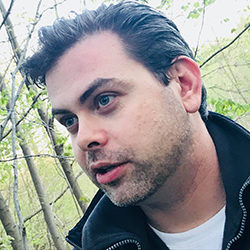“When the school is on the reserve, the child lives with its parents, who are savages, and though he may learn to read and write, his habits and training mode of thought are Indian. It has been strongly impressed upon myself, as head of the Department, that Indian children should be withdrawn as much as possible from the parental influence, and the only way to do that would be to put them in central training industrial schools where they will acquire the habits and modes of thought of white men.” – John A. Macdonald, Canada’s first Prime Minister, 1883
There’s no other way to put it – Canadian history has been grossly whitewashed.
The history of the Métis community in particular – who trace their descent to Indigenous people in North America and European settlers – presents a darkly skewed narrative.
It was only until the “Manitoba Métis Federation v. Canada” case was heard in 2013 – when the Supreme Court of Canada formally recognized the theft of land and resources from the Métis people – that the community felt they could begin to heal.
But their ancestors are still searching for answers.
Jesse Thistle, a Métis-Cree PhD student at York University in Toronto, is studying intergenerational and historic trauma of the Métis people, which has affected his family since 1885. He jokes that had people seen him at his worst, they would not recognize him now.
From 1997 to 2006, Thistle cycled in and out of homelessness. From 2006 to 2008 he was completely homeless, before going to jail and then rehabilitation. One year after that though, he found his footing – and never looked back.
Now Thistle is trying to understand where he came from, and how events in the past have played a role in shaping who he is today. What he discovered was a dark and tragic history of an entire people.
Facing the past
Thistle’s Métis-Cree ancestors on his mother’s side fought at the Battle of Batoche in Saskatchewan, including his cousin – the renowned Louis Riel – who was hanged for treason in 1885. His Algonquin great-grandfather on his father’s side ended up in a Spanish Indian residential school in Ontario.
More recently, in the 1970s, Thistle was taken by his paternal grandparents in Brampton, Ontario after his nuclear family fell apart. It can be argued that he was part of the sociological trend that saw one of tens of thousands other Indigenous children forcibly taken from their families and communities for placement in Catholic foster homes or adoption – commonly referred to as the Sixties Scoop.
Thistle’s situation, however, was different; lucky in many ways, as he was placed with his grandparents, but it was a placement that disconnected him from his mother’s Saskatchewan Métis community.
Today, Thistle’s home in North York stands down the road from a Catholic elementary school. In his living room, a blown-up photograph of ‘Old Toronto 1888’ sits on the living room wall. It’s a gift from his wife Lucie, whom he describes fondly as “his backbone”.
Jesse Thistle’s mother and father. (Jesse Thistle)
It’s a striking photograph that points to how deeply Christian heritage shaped the city of Toronto: Its earliest municipal wards were named after the patron saints of the British Isles (St. George, St. Andrew, St. Patrick, St. David); these names remain on landmarks throughout the city, including three subway stations.
Thistle’s story, and academic research, begins in the late 1800s after the 1885 resistance. His great grandmother, Marianne Ledoux Morissette, supported the Métis Resistance in 1885 during the Battle of Batoche. She cooked for Riel’s troops.
“We kind of fall off the historical map in terms of broader Canadian historiography,” he says.
Part of his research involves building an archive of Métis colonial trauma throughout generations. “Everyone knows about Louis Riel, but no one knows what happens to his people afterwards,” he adds.”
As the founder of the province of Manitoba and a Métis political leader – leading two resistances against the Canadian government and post-Confederation prime minister John A. Macdonald – Riel has arguably received more scholarly attention than any other figure in Canadian history.
“Métis lost their lands, our government structure, our freedom, basically, and came to squat on the sides of the roads in Saskatchewan where my mom’s people are from,” he says. “That continued all the way up to my generation.”
Delving into history
Thistle’s decision to search his own family history began six years ago, when his undergraduate history professor Victoria Freeman asked him to write a paper individually situating himself within colonialism.
After reading Thistle’s work, Freeman connected him to professor Carolyn Podruchny, co-founder of the History of Indigenous Peoples (HIP) Network.
Podruchny was working on a Métis history project on the prairie provinces, particularly Saskatchewan and Manitoba. “I knew about families like his [Thistle],” she says. “I knew the history of where they came from, how they ended up where they did, and why Jesse might have ended up in his situation.”
Jesse Thistle at his ancestral cemetery. (Jesse Thistle)
Thistle did several independent reading courses with Podruchny throughout his undergraduate degree.
“Jesse did all the hard research himself in terms of his particular family history,” adds Podruchny, who provided him with the background and wider context to place his family’s story.
In 2013, Podruchny took Thistle to a meeting in Ottawa to meet others working on Métis history. In what she describes as a powerful moment, Thistle met acclaimed author of Halfbreed, Maria Campbell, who also happened to be a first cousin of Thistle’s (twice removed).
Campbell recognized Thistle’s name right away. She knew exactly where he had been in Saskatchewan as an infant.
Thistle says meeting Campbell was both awe inspiring and intimately home.
“When she looked at him, she saw him as someone who was taken from her community,” recalls Podruchny. She later asked Thistle for help on a larger project–touring historical Métis sites throughout Saskatchewan, to which he obliged.
Over the next three weeks, he travelled with several members of his family to places where his ancestors lived and died.
“I felt it was really important for him to go alone because he’s someone who is part of that community, and I was an outsider,” says Podruchny, who is now his PhD supervisor. “I represented the university. I felt it was more important for him to connect with his family and start gathering his own archives.”
Back to jail
Thistle is now the Resident Scholar on Indigenous Homelessness for the Canadian Observatory on Homelessness.
As a survivor of the streets, addiction, and the justice system, he’s taking his lived experience to educate social workers, Children’s Aid Society workers and academics.
Today Thistle reflects on the whirlwind of events in his life that has brought him to where he is now: An academic aimed at bettering the lives of future generations of Indigenous youth. “It seems I’m going to jail once more,” he posted on Facebook last April. “Toronto South Detention Centre (TSD) to be exact.”
“It’s been 11 years since I was locked up. But now I’ll return to speak with jail staff, inmates, and administration about the power of rediscovering one’s Indigenous identity and culture and how it can lead to things like higher education, stability, and sobriety.”
It was a role the TSD offered him three months ago, which he declined. But when they approached him again to help open their new Indigenous healing unit, he had a change of heart. “The new healing unit will help the guys find themselves and heal through traditional means. If anyone needs to hear me, it’s those guys inside.”

Ryan Moore is a Master of Journalism student at Ryerson University. He has written for Vice News and interned at Global News in Toronto.

